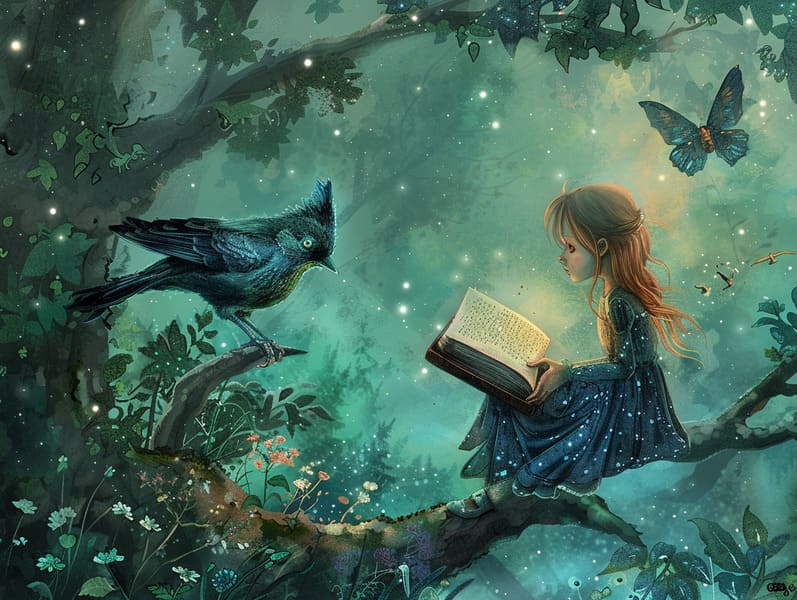Tracing the Heritage of Fairy Tales and the Unchanging Grandeur.
Tracing the Heritage of Fairy Tales and the Unchanging Grandeur.
Blog Article

Grimm's fairy tales have enduring presence. These tales have been recounted from one generation to the next millennia before they were ever written down. They originated from a variety of societies, including Western traditions. They were initially passed along among elders, often carrying themes and messages concerning the societal norms and beliefs of the time.
The Grimm brothers, Jacob and Wilhelm (the Grimm brothers), were among the first to gather and publish many of these beloved fairy tales. Their published works, "Grimm's Story Collection," included classics like "Ashenputtel," "The Bread Crumb Trail," and "Schneewittchen," which have since become essentials in the world of children's fairy tales. Similarly, Hans Andersen's delightful tales, such as "The Mermaid's Tale," and "The Little Duckling," have floated into hearts worldwide, solidifying their place in the pantheon of treasured fairy tales.
Despite their age, classic fairy tales remain as meaningful as ever, especially as nighttime stories for kids. These enchanting tales are now available in multiple formats, including vividly illustrated books, charming animations, and online fairy tales.
Their unwavering allure can be linked to several enchanting factors:
Key Lessons: Old fairy tales often illustrate important moral lessons. Stories like "The Shepherd Boy and the Wolf" teach the benefit of truthfulness, while "The Story of the Tortoise and the Hare" demonstrate the virtues of persistence and unpretentiousness. These stories offer the young clear distinctions between correct and incorrect, shaping their moral compass in a gentle yet profound way.
Empathy and Understanding: Traditional fairy tales frequently depict heroines facing tests and troubles, inciting children to relate with their struggles and rally behind their triumphs. For instance, "The Tale of Beauty and the Beast" illustrates the merit of looking beyond appearances to realize the inner spirit of a being, nurturing empathy and appreciation.
Cultural Understanding: Many timeless fairy tales are deeply ingrained in the cultural contexts from which they grew. Learning from these stories can provide intriguing perspectives into different societies, advancing a sense of global appreciation and recognition.
Creativity and Imagination: The supernatural elements in traditional fairy tales—supernatural elements—encourage children’s visions. These fairy tales transport readers to fantasy realms, boosting creative dreams and a sense of magic that persists a lifetime.
Ancient fairy tales are not only charming but also informative. They act as mesmerizing tools in nurturing various brain and heart skills in the young. When traditional fairy tales are voiced, they improve language proficiency by showing new words and complex sentence structures. This practice also strengthens listening skills and concentration, as kids follow the story, ready to see what happens next.
Furthermore, debating the themes and characters of fairy tales can nurture thinking skills and thought processes. The young are shown to see patterns, expect results, and understand cause and effect. These contemplations also benefit the young verbalize their thoughts and feelings, fostering their emotional intelligence.
In today’s information age, the accessibility of digital storybooks has made these tales more reachable than ever. Web-based platforms and online apps provide extensive collections of ancient fairy tales that can be seen or listened on anytime, read more anywhere. Fairy tales read out loud are particularly sought after, presenting an interactive way for young ones to relish these whimsical stories. Voice books and read-aloud videos carry characters and settings to life, often augmented by mesmerizing harmonies and musical scores that improve the tale journey.
The unending appeal of old fairy tales lies in their ability to adjust to current times while retaining their central messages. Contemporary reimaginings of these narratives often highlight more representative protagonists and modern settings, making them familiar to today’s audience. However, the main ideas of fortitude, empathy, and rightness remain unchanged, continuing to strike a chord with readers of all ages.
Classic fairy tales also offer a sense of solace and predictability. They make accessible a neat narrative with a clear beginning, middle, and end, often drawing to a close with the closure of conflicts and the triumph of rightness over wrongness. This regularity can be placating for young ones, distributing a sense of security in an inconstant world.
Timeless fairy tales continue to entrance and inform new generations, maintaining their elegance and meaningfulness in modern society. As children's bedtime stories, they impart a perfect blend of fantasy and learning, promoting moral values, empathy, and creativity. The accessibility of internet fairy tales and the commonness of fairy tales voiced warrant that these ancient fairy tales remain reachable to new generations.
By preserving and imparting these stories, we continue to recognize the rich tapestry of inventiveness and cultural heritage. Whether you are reading a beautifully illustrated book, delving into a digital collection, or playing an sound book, the radiance of famous fairy tales is always within reach. These stories reveal of the unceasing influence of fairy tales and its ability to tie us across centuries and lands.
No matter if you are exploring a beautifully illustrated book, delving into a cyber library, or listening to an read-aloud story, the enchantment of traditional fairy tales is always within reach.
These fairy tales demonstrate of the consistent effect of stories and its ability to bind us across generations and cultures, forging a link that delights and instructs alike.